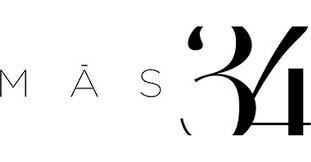Introduction
The dangerous Eastern Great Sand Sea, also known as the Libyan Desert, is the source of this mineral through which Libyan Desert Glass jewelry is made, which has long attracted human interest. It was highly prized by pharaohs in ancient Egypt, and Tutankhamun even used it as the focal point of his Libyan Desert Glass necklace.
Getting this priceless substance took a trek of more than 2000 kilometers over sweltering hot dunes; thus, getting it wasn’t an easy task. In the middle of this wildness, Libyan Desert Glass, a mineral that predates human civilization, was found. It is one of the rarest minerals on the globe, with gemologists believing that there are just 1,400 tons of deposits, despite its enigmatic beginnings. Because of this, gem aficionados greatly value it.
Origin of Libyan Desert Glass
Scientists have been disputing the origin of this natural glass for more than 200 years. The explosion of a meteorite in the atmosphere is the most likely cause. The presence of black inclusions in various Libyan Desert Glass samples supports this hypothesis. They also include iridium, which is present in amounts that are unusual for the earth’s crust, in addition to the elements typical of meteorites (iron, nickel, and cobalt).
According to experts, this is how the Libyan Desert Glass may have originated. A meteorite with a diameter of 30 meters exploded into the earth’s atmosphere 28 million years ago. Its thick layers erupted, releasing a huge quantity of heat energy. Desert sand was melted across a vast region of land by hot air that reached temperatures of up to 2000 C. The sand transformed into glass after cooling. The pieces of desert glass initially had an uneven form and a rough surface. Like a sea wave grinds bottle shards, the surface was polished over time by the wind and sand grains.
The History of Libyan Desert Glass
The Golden glass was first discovered thousands of years ago. The discovery of glass axes, spearheads, and other implements used by the inhabitants of the Libyan Desert serves as proof of this. To create sharp edges for their crude tools, they broke smooth stones. Additionally, the beauty of desert diamonds was something that ancient humans could not overlook. The centerpiece of Tutankhamun’s necklace, a scarab-shaped piece made approximately 1300 BC, carries a piece of Libyan Desert Glass.
Libyan glass was forgotten about until the first half of the 20th century for some reason. Sir Robert Clayton discovered several yellow glass stones in 1932 while searching for the fabled Lost Oasis of Zerzura. Prior to Italian scientists solving the mystery of their genesis in 1999, experts had long conjectured about their origin.
Chemical and Physical Properties
The finest form of natural glass is the Libyan Desert Glass mineral. 98% of it is silicon dioxide, while the remaining 2% is dust that is likely from another planet. The substance is a member of the broad category of tektites, or meteorite-impact-formed minerals.
Libyan Desert Glass is used in Libyan Desert Glass jewelry as an inlay material for Libyan Desert Glass bracelets, Libyan Desert Glass rings, Libyan Desert Glass earrings, Libyan Desert Glass pendants, medallions, amulets, and other jewelry items. The Mohs scale rates these meteorite-born stones between 5.0 and 6.0, making them tough enough to resist chemical or mechanical harm. It can withstand any extreme temperature; otherwise, the Libyan Desert’s heat would obliterate it. The mineral is simple to cut and polish. It may assume whatever shape you like. However, it’s typical to emphasize its alien origin by using its naturally uneven shape.
The impact stone is a great choice for Libyan Desert Glass jewelry because of its lovely look. While some examples are completely transparent, others have a lovely milky mist. Individual specimens have a variety of light yellow hues, ranging from almost white to honey. It is hence affectionately referred to as the “Sun of the Libyan Desert.”
Also, Read more articles at abcbnews.com
Among their contemporaries, clear stones are the most valuable. Different types of inclusions, on the other hand, have little effect on the mineral’s worth. On the other hand, they may sharply raise their pricing. The swirls and bars in Libyan Glass that are black or brown are really meteorite fragments. The Libyan Desert is generally untreated.
Healing Properties of Libyan Desert Glass
It’s said that Libyan Desert Glass might lessen the detrimental impacts of stress. It aids in calming the nerves and promoting restful sleep. This unique mineral is used in amulets and talismans that can provide tranquility and protect you from nightmares. Additionally, the mineral makes it easier to cure respiratory illnesses. Additionally, it has a positive impact on renal and metabolic functions. Experts in lithotherapy recommend Libyan Desert Glass to patients with diabetes, eating problems, and low blood pressure.
The Magical Properties of Libyan Desert Glass
The ancients utilized Libyan glass for ceremonies as well as tools and ornamentation. They thought that using magic stones would enable them to communicate with the realm of spirits. Additionally, this stone evolved into essential components of witchcraft, rainmaking, funeral, and healing rituals.
Ancient cultures considered Libyan glass to be a divine gift. It serves the same function for contemporary shamans. You may benefit from the natural glass even if you are unfamiliar with shamanic and enigmatic rites. It will increase your comprehension of the outside world and solidify your karma so that you can rely on it. Libyan Desert Glass will be helpful if you wish to steer clear of errors and make wise choices. It also makes a fantastic talisman for warding off evil eyes.
Glass from the Libyan desert favors Aries and Cancer. The latter might use the stone to make amends for earlier errors. It supports Cancers in their creative undertakings and provides them with luck.
Libyan Desert Glass Jewelry from Rananjay Exports
The highlight of our Libyan Desert Glass jewelry collection is that it is both beautiful and quite uncommon. To maintain and accentuate their natural beauty, we painstakingly cut and polish these golden stones. Every item we sell has a distinctive form, color, and internal structure, so you’ll possess a one-of-a-kind gem. Uncut, undrilled nuggets, cabochons, and free-form cuts in Libyan Desert Glass jewelry are available for purchase at Rananjay Exports. Additionally, we create wearable items like Libyan Desert Glass bracelets with beads and Libyan Desert Glass pendants with 925 sterling silver settings. We promise reasonable pricing, authenticity, and unmatched quality for whatever product you select.
We have been providing exquisite gemstone jewelry at wholesale prices to the global gemstone and jewelry industry since 2013. Our reputation as a reputable wholesale gemstone jewelry manufacturer and supplier is based on our use of over 250 naturally occurring gemstones to create sterling silver jewelry. Among the gemstones we specialize in are Opal, Moonstone, Larimar, Jasper, and Turquoise. We also offer other types of sterling silver jewelry, including Moon Magic Jewelry, Chakra Jewelry, Zodiac Sign Jewelry, and birthstone jewelry.




